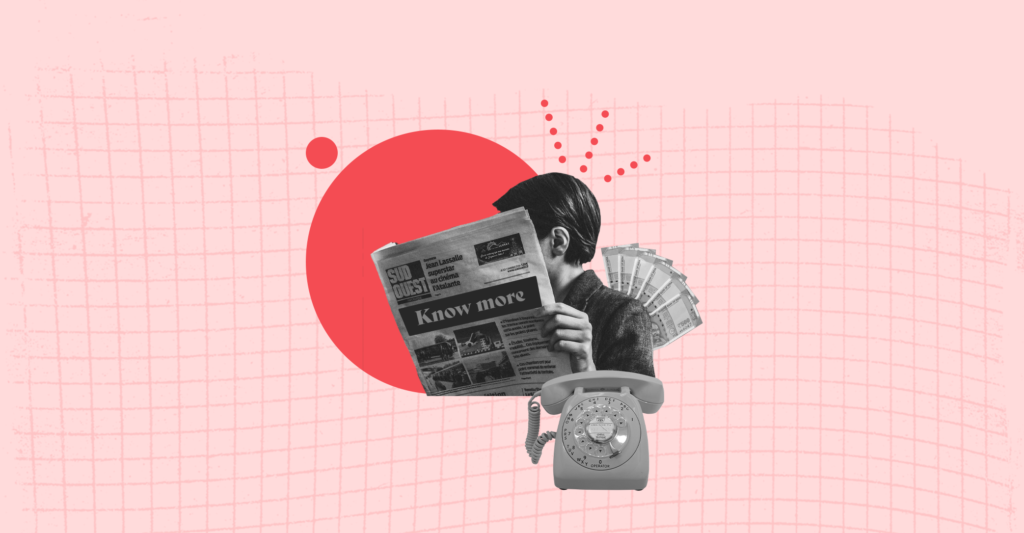Last Updated on May 24, 2022 by Aradhana Gotur
The word Fiat is derived from Latin that means ‘it shall be’ or ‘let it be done’. It is said that fiat money originated in China in the 10th century. In the Tang Dynasty (618-907), metallic currency was in high demand, leading to a pumped-up supply of precious metals. Later, because of a shortage of metals and therefore coins, people were obligated to use notes. But what is fiat money? Who issues it? Let us find out more.
Table of Contents
What is fiat money?
Fiat money is the paper currency issued by the government. It holds no intrinsic value. Fiat money is not backed by any physical commodity like silver or gold. As a result, fiat money is based on the creditworthiness of the government.
Unlike commodity value, the value of fiat money is determined by supply and demand as well as the stability of the government producing it. Another type of currency – representative money – is a claim on a commodity that can be redeemed. Fiat money was introduced as an alternative to both commodity and representative money.
The majority of current paper currencies are fiat currencies, including the Indian rupee, the British pound, the Euro, and the US dollar, among others.
With fiat money, central banks tend to have greater control over the economy as it is in their authority how much money is printed. There is, however, the danger of hyperinflation, as the government can flood the economy by overprinting.
How does fiat currency work?
As fiat money is not backed by any physical commodity, it derives value from government declaration and precisely so because the issuing government maintains that value, and also because two parties agree on its value for a transaction.
Ultimately, the country’s economic performance and governance decide the value of fiat money. A country enduring political instability is bound to have weak currency value and inflated commodity prices.
Fiat money does not have physical reserves; it, therefore, suffers a loss of value due to inflation or may also become worthless during hyperinflation. Fiat currency gains its purchasing power when it regains its ability as a strong storage medium.
In contrast to fiat money, a currency backed by gold, for example, always has intrinsic value owing to the demand for gold as a limited resource. Another feature of fiat money is that it cannot be redeemed and is inconvertible.
Merits of fiat money
Fiat money is considered a good seigniorage. It represents the monetary unit needs of a country’s economy—storing value, numerical account, and also facilitates exchange.
Fiat currencies became prominent in the 20th century in the effort to protect a country’s economy from the adverse effects of the business cycle. Paper money ultimately provided purchasing power and an alternative to the barter system.
Central banks have greater control over the supply of fiat money as it is not a scarce or fixed resource like gold. This also gives them the authority to take control of economic variables such as credit supply, liquidity, interest rates, and money velocity. Finally, fiat money offers value stability, unlike commodity money like gold, copper, and silver.
Studies have established that in the past couple of decades, most countries with fiat currencies have experienced only moderate inflation cycles, that is, an average of less than 2% per year. Experts believe a consistently low level of inflation is a positive driver for investment and economic growth.
Demerits of fiat money
Critics of fiat money argue against the stability of fiat currencies.
The mortgage crisis of 2007 and the resulting financial meltdown is a good example to understand problems with fiat money. Firstly, it could not prevent the crisis from happening. Secondly, central banks cannot necessarily avoid depressions or severe recessions by regulating the money supply.
Again, very importantly, the government can trigger hyperinflation in turn collapsing the economy. Venezuela’s current crisis is an excellent reference point for this.
Alternatives to fiat money
Today, every country has a legal tender, that is, fiat money. In the past decade, however, cryptocurrencies, such as Bitcoin, have challenged the inflationary nature of fiat currencies. There is also commodity money. Although we can buy and sell gold and gold ETFs, we cannot use them in the barter system. As such, these virtual assets cannot be approved as ‘money’ in the traditional sense. They tend to be more of a speculative asset or collectable.
But it may be said that some truly look at cryptocurrencies to replace fiat money in the future.
Fiat currency is the paper money that governments print. Paper money gained prominence in the West in the 18th century. American colonies, France, and the Continental Congress began to issue credit bills to make payments.
In the early 20th century, the government and banks were bound by the promise to convert notes and coins into their nominal commodity on demand. However, because of the high cost of the American Civil War and the need to rebuild the economy, the government had to cancel the redemption.
In 1971, Richard Nixon cancelled the direct conversion of dollars into gold due to declining gold reserves. And ever since, most global economies have adopted fiat currencies which are exchangeable between major currencies of the world.
However, in the 21st century, fiat currencies remain challenged by cryptocurrencies. Only time shall tell if this is a valid replacement.
- How To Declare Mutual Funds in ITR & Disclose Capital Gains in India? - Jun 6, 2025
- How To Sell or Exit Your Mutual Funds in India? - Jun 6, 2025
- Fund of Funds (FOF): Meaning, Types & Advantages - May 13, 2025





